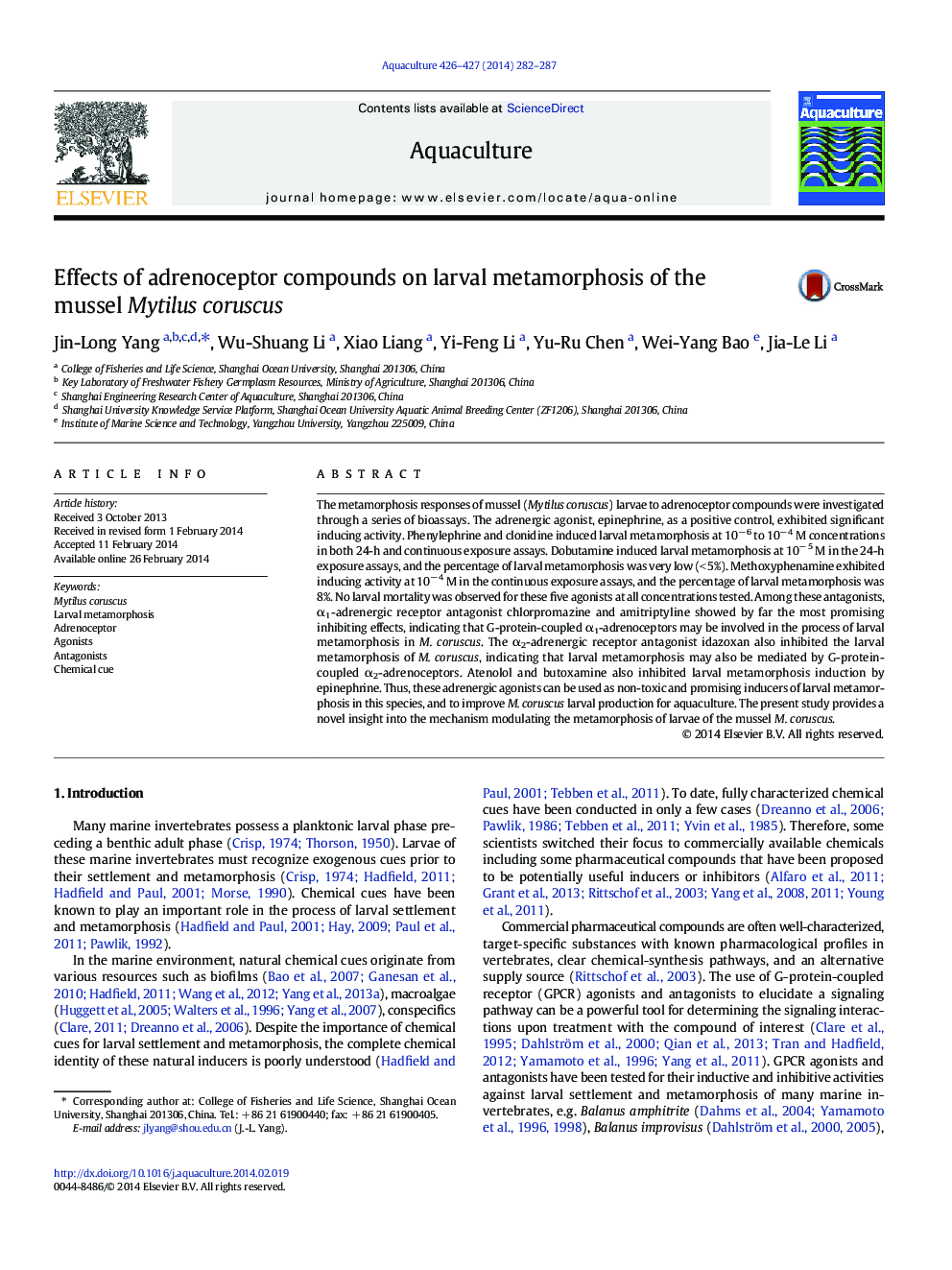| Article ID | Journal | Published Year | Pages | File Type |
|---|---|---|---|---|
| 8495174 | Aquaculture | 2014 | 6 Pages |
Abstract
The metamorphosis responses of mussel (Mytilus coruscus) larvae to adrenoceptor compounds were investigated through a series of bioassays. The adrenergic agonist, epinephrine, as a positive control, exhibited significant inducing activity. Phenylephrine and clonidine induced larval metamorphosis at 10â 6 to 10â 4 M concentrations in both 24-h and continuous exposure assays. Dobutamine induced larval metamorphosis at 10â 5 M in the 24-h exposure assays, and the percentage of larval metamorphosis was very low (< 5%). Methoxyphenamine exhibited inducing activity at 10â 4 M in the continuous exposure assays, and the percentage of larval metamorphosis was 8%. No larval mortality was observed for these five agonists at all concentrations tested. Among these antagonists, α1-adrenergic receptor antagonist chlorpromazine and amitriptyline showed by far the most promising inhibiting effects, indicating that G-protein-coupled α1-adrenoceptors may be involved in the process of larval metamorphosis in M. coruscus. The α2-adrenergic receptor antagonist idazoxan also inhibited the larval metamorphosis of M. coruscus, indicating that larval metamorphosis may also be mediated by G-protein-coupled α2-adrenoceptors. Atenolol and butoxamine also inhibited larval metamorphosis induction by epinephrine. Thus, these adrenergic agonists can be used as non-toxic and promising inducers of larval metamorphosis in this species, and to improve M. coruscus larval production for aquaculture. The present study provides a novel insight into the mechanism modulating the metamorphosis of larvae of the mussel M. coruscus.
Related Topics
Life Sciences
Agricultural and Biological Sciences
Aquatic Science
Authors
Jin-Long Yang, Wu-Shuang Li, Xiao Liang, Yi-Feng Li, Yu-Ru Chen, Wei-Yang Bao, Jia-Le Li,
